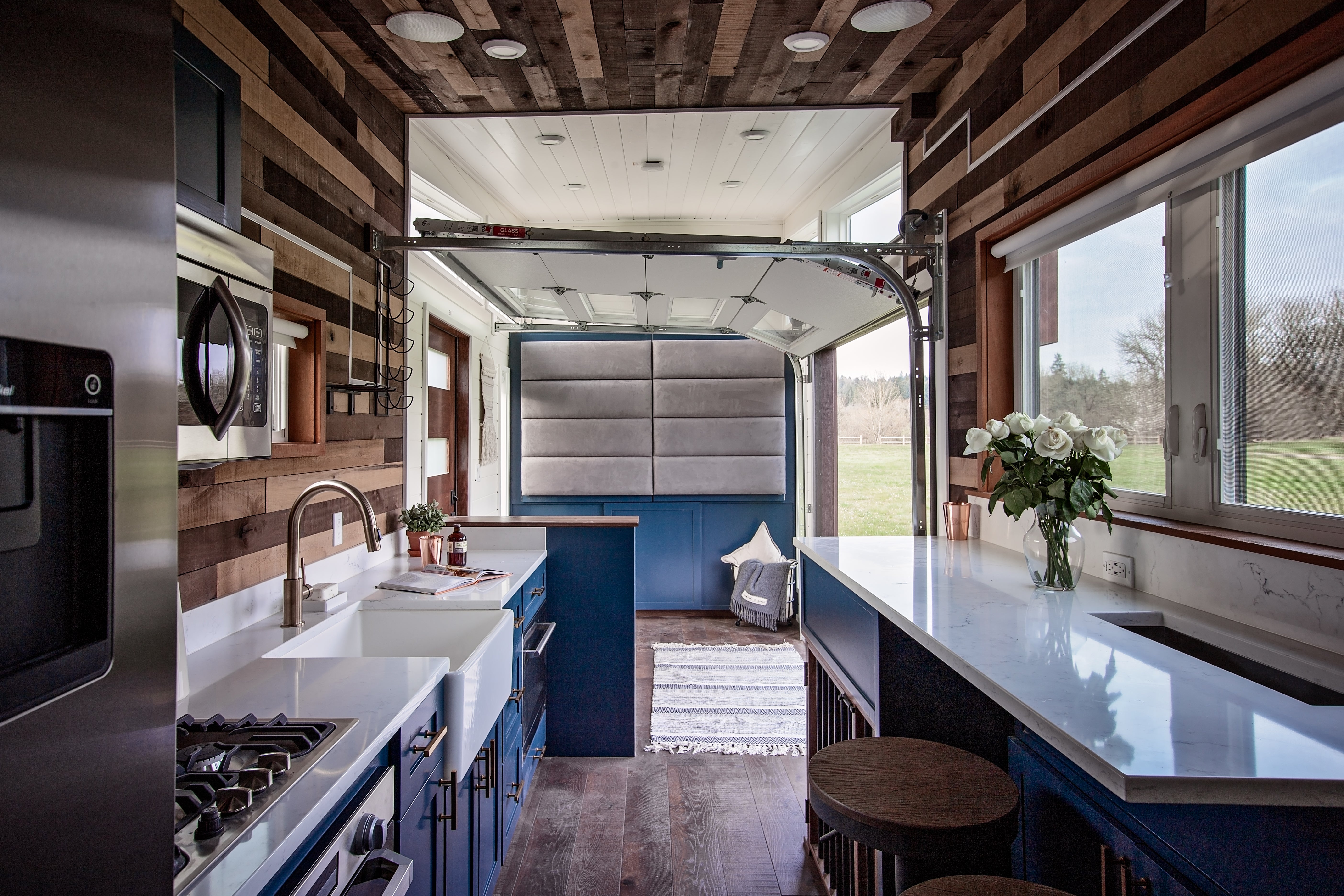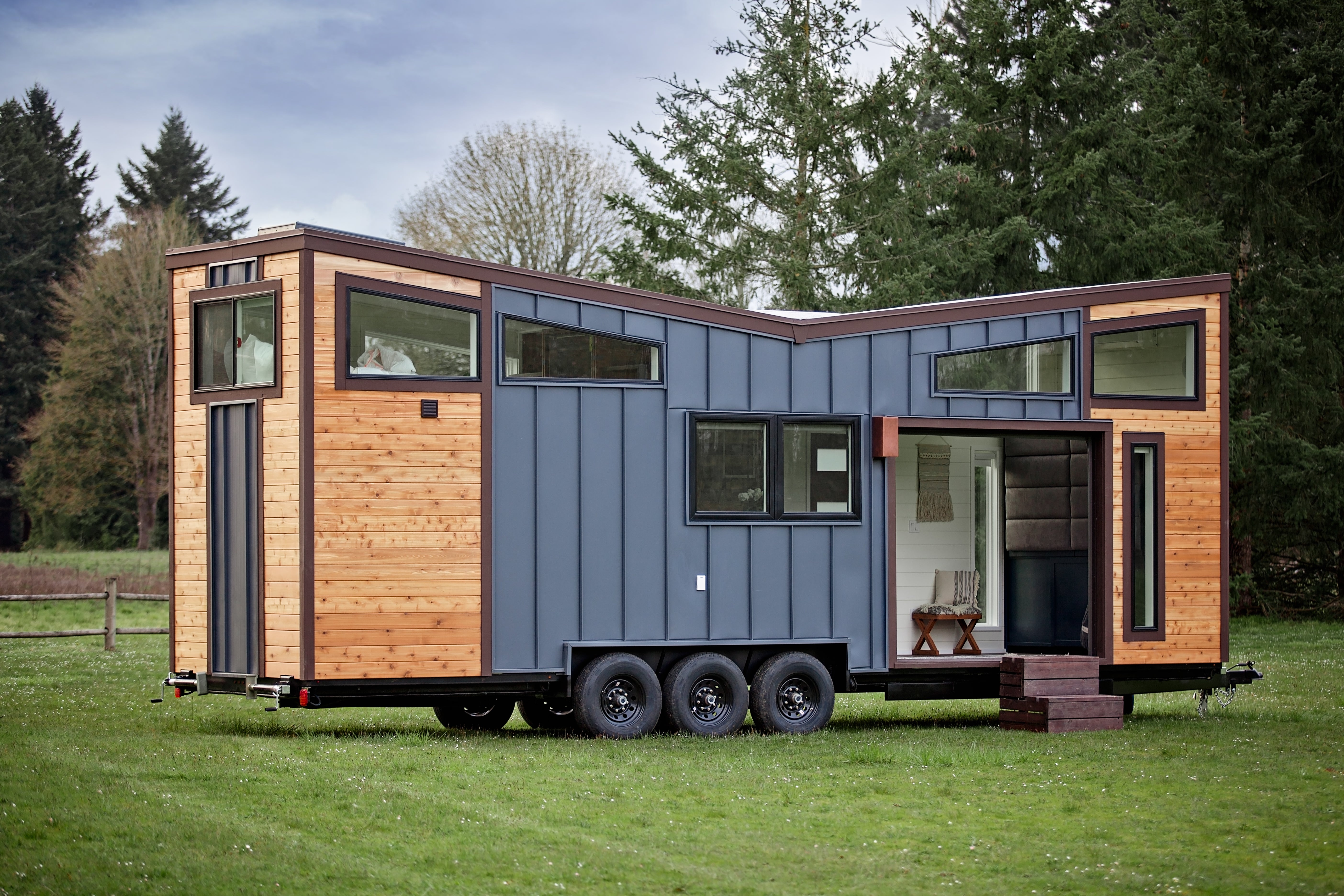Among the many clever strategies used in tiny home design, pocket doors stand out as a favourite. These sliding panels create privacy and separation without demanding swing clearance, which is a premium in homes where every inch counts.
However, beyond space-saving, the hardware you choose for these doors defines their look, feel, and performance. Selecting antique bronze pocket door hardware is one way to enhance both the form and function of a tiny home interior.
Why Pocket Doors Make Sense in Tiny Living
Pocket doors are kind of a no-brainer when it comes to tiny homes. They slide right into the wall, which saves a surprising amount of space — no need to leave room for a swinging door, so you can fit in furniture, walk around more easily, or even rework how a room is used. In a place that’s under 400 square feet, even a small door swing can mess with your layout. That’s why you’ll see pocket doors all over the place in tiny builds — between the bathroom and living area, next to loft ladders, or hiding away storage nooks.
They also help break up the space visually and sound-wise. Even though most tiny homes lean into open-plan design, sometimes you want to close off a space, just a bit. Pocket doors give you that option — so your bedroom can feel separate when it’s time to sleep, or your desk area gets some peace when you need to focus.

The Importance of Hardware in Small‑Scale Design
In compact environments, every touchpoint becomes more important. Homeowners interact with hardware constantly. It must feel substantial in the hand, operate smoothly, and reflect the home's visual language. Poor‑quality components undermine that experience, especially when installed in areas with frequent use.
Hardware is one of those little things that does double duty — it has to work well, obviously, but it also needs to look good while doing it. A sliding door pull shouldn’t stick or wobble, and when it feels solid in your hand, you notice.
At the same time, it’s part of the whole vibe of the room. That’s why antique bronze is such a smart pick. It brings in this nice depth and warmth, and it doesn’t feel flashy. It just fits, especially if your tiny home leans into wood tones or natural textures, which a lot of them do.
Research on user satisfaction in small‑dwelling environments emphasises the importance of fittings that support both space efficiency and tactile comfort. A study found that well-specified hardware and ergonomic design significantly enhance the resident experience.
Matching Style with Structure
Tiny homes often borrow from a mix of architectural styles. Whether the space is a modern prefab or a craftsman‑inspired cottage on wheels, the door hardware needs to echo that style without overwhelming it. Antique bronze offers subtle elegance. It carries a weighty presence without flash, making it ideal for interiors that rely on cohesion and material integrity.
The clean lines of pocket doors pair well with hardware that feels intentional. Recessed pulls or edge pulls in a bronze finish look tailored rather than temporary. For more rustic or traditional interiors, sculptural shapes can introduce visual interest while staying true to the home’s design language.
In all cases, material matters. Solid bronze hardware ages beautifully, developing a patina over time. This quality aligns with the broader trend in tiny-home living toward durable, natural, and low-maintenance finishes.
Installation Considerations

Choosing pocket doors in a tiny home isn’t only about aesthetics. Installation conditions differ from those of full-scale construction. Wall thicknesses may be narrower. Stud layouts might be custom. Every inch of space used by the door cavity must be justified by function.
As a result, the hardware must be compact, reliable, and compatible with thinner profiles. The track systems need to be smooth and quiet, and pulls should sit flush or close to flush when the door is fully closed. This prevents protrusions from disrupting the flow of the interior or creating snags in narrow walkways.
Some manufacturers offer kits specifically designed for small spaces. Others offer customizable solutions that accommodate a range of interior thicknesses and door materials. For example, engineers in tiny-house construction emphasize the importance of designing for efficient structural integration and high-performance materials.
Pocket Doors Beyond Privacy
In tiny homes, flexibility is paramount. A pocket door does more than close a room. It can serve as a movable wall. When designed well, it can double as a chalkboard, mirror, or feature panel that activates a blank wall when closed.
This means hardware placement becomes part of a larger composition. Where the pull sits, how it feels, and what it looks like contribute to both closed and open states. Antique bronze, with its matte luster and natural tone variation, blends well into both active and passive visual roles.
Some designers even specify matching hardware across door types to unify the look throughout the home. This can include hinges, cabinet pulls, and window latches, all echoing a similar finish and form language.
Sound, Security, and Sensation
Because tiny homes are often built with lightweight framing, acoustic insulation can be a concern. A pocket door with quality hardware closes with a firm latch and resists rattling or shifting. These small details create a stronger sense of separation, which is especially helpful for sleep and study zones.
Security may also matter. In mobile tiny homes, hardware must be resilient during transit. A pull that loosens or misaligns can compromise the door's function. High-quality fasteners, solid construction, and careful installation are all essential for long-term satisfaction.
From a sensory standpoint, something is grounding about interacting with solid materials. Bronze hardware offers a unique combination of temperature resistance, texture, and durability. It signals care and craftsmanship, values many tiny‑home owners share.
The Design Opportunity in Every Detail

Designing a tiny home often feels like editing a story. Everything included must have meaning, and nothing extra is left behind. That makes each detail more critical, not less. A pocket door may seem secondary to structure or storage, but it becomes a design centerpiece when framed by intentional hardware.
Rather than defaulting to lightweight or temporary materials, selecting heirloom‑quality pieces elevates the daily experience. Antique bronze hardware offers timeless appeal, tactile richness, and compatibility with many tiny‑home materials.
These choices can also influence resale value or rental desirability. Prospective buyers and guests notice details. A flush pull that feels good to the hand, works smoothly, and looks deliberate leaves a strong impression.
Sustainability and Longevity in Small‑Scale Homes
Sustainability is central to tiny‑house thinking. Material choices matter not only for appearance but for lifecycle performance. A very recent study on tiny house construction found that the carbon footprint and embodied energy of material systems vary dramatically according to design choices.
This reinforces the importance of selecting hardware that will age gracefully, rather than degrade. A durable finish, a mechanism that resists wear, a design that remains relevant—these all contribute to a more sustainable home. When the finishes in a home are chosen for longevity, the need for updates reduces, and the space feels richer.
Conclusion
Tiny homes ask for a design that is both disciplined and expressive. Pocket doors fulfil both roles - they free up space while providing privacy and texture. But it is the hardware that finishes the story.
Choosing antique bronze pocket door hardware connects form and function. It supports compact architecture while elevating the visual and physical experience of the home. In a space where every choice matters, this is one detail worth investing in.
By placing thoughtful emphasis on high‑quality hardware, tiny‑home builders and homeowners alike can shape spaces that resonate with purpose, integrity, and beauty for years to come, not despite being small, but because of it.





Share: